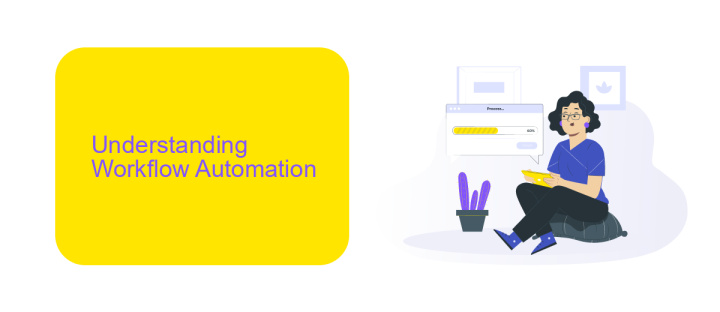Workflow Automation Engine
Workflow automation engines are revolutionizing the way businesses operate by streamlining repetitive tasks and optimizing efficiency. These powerful tools enable organizations to automate complex processes, reduce human error, and free up valuable time for strategic decision-making. In this article, we will explore the key features, benefits, and real-world applications of workflow automation engines, demonstrating how they can transform your business operations.
Introduction
In today's fast-paced business environment, workflow automation engines play a crucial role in streamlining operations and enhancing productivity. These engines enable organizations to automate repetitive tasks, reduce errors, and ensure consistency in business processes. By leveraging workflow automation, companies can focus on strategic activities that drive growth and innovation.
- Automate routine tasks to save time and resources
- Reduce human error and improve accuracy
- Ensure compliance with standardized processes
- Enhance collaboration and communication among teams
- Integrate with various tools and platforms seamlessly
One such tool that facilitates seamless integration is ApiX-Drive. It allows businesses to connect different applications and automate data transfer between them without any coding. By using ApiX-Drive, companies can easily set up and manage integrations, ensuring that their workflow automation engine operates efficiently. This not only simplifies the process but also maximizes the benefits of automation, making it an indispensable asset for modern enterprises.
Understanding Workflow Automation

Workflow automation is the process of designing, executing, and automating processes based on pre-defined business rules where human tasks, data, or files are routed between people or systems. This automation streamlines workflows by reducing manual intervention, minimizing errors, and ensuring that tasks are completed efficiently. By implementing a workflow automation engine, businesses can significantly enhance productivity, improve accuracy, and ensure compliance with industry standards.
One of the critical aspects of workflow automation is the integration of various services and applications. Tools like ApiX-Drive facilitate this by allowing seamless integration between different software systems without requiring any coding skills. ApiX-Drive enables businesses to connect their existing applications, automate data transfers, and synchronize information across platforms effortlessly. This helps in creating a cohesive and efficient workflow, ensuring that all systems work in harmony and that data flows seamlessly from one process to another.
Benefits of Workflow Automation

Workflow automation significantly enhances operational efficiency by streamlining repetitive tasks and reducing manual intervention. This leads to fewer errors and allows employees to focus on more strategic initiatives, ultimately boosting productivity and morale.
- Increased Efficiency: Automation accelerates processes, ensuring tasks are completed faster and more accurately.
- Cost Savings: By reducing the need for manual labor, businesses can save on operational costs and redirect resources to other critical areas.
- Enhanced Accuracy: Automated workflows minimize human errors, leading to higher quality outputs and more reliable data.
- Scalability: Automation allows businesses to scale operations seamlessly, accommodating growth without a proportional increase in workload.
- Integration Capabilities: Tools like ApiX-Drive facilitate seamless integration between various applications, enhancing the overall efficiency of automated workflows.
Implementing a workflow automation engine not only optimizes day-to-day operations but also provides a competitive edge in the market. By leveraging advanced tools and integration services, businesses can ensure a smooth, efficient, and scalable workflow that adapts to their evolving needs.
Selecting and Implementing a Workflow Automation Engine

Selecting and implementing a workflow automation engine is a critical step in enhancing operational efficiency. The first step involves identifying the specific needs and goals of your organization. Determine which processes can be automated and how automation can improve productivity and reduce errors.
Next, evaluate different workflow automation engines based on criteria such as ease of use, scalability, and integration capabilities. Consider whether the engine supports the technologies and platforms your organization currently uses. Additionally, assess the cost and potential return on investment.
- Define your automation goals and requirements.
- Evaluate different automation engines.
- Consider integration capabilities with existing systems.
- Assess cost and ROI.
- Plan for implementation and training.
When it comes to integration, services like ApiX-Drive can be invaluable. ApiX-Drive allows seamless integration between various applications, ensuring that your workflow automation engine can communicate effectively with other tools. Implementing a well-chosen workflow automation engine will streamline operations, increase efficiency, and ultimately drive business success.
Case Studies and Best Practices
One of the most compelling case studies in workflow automation involves a mid-sized e-commerce company that integrated ApiX-Drive into their operations. By automating order processing, inventory management, and customer service workflows, they achieved a 30% reduction in manual tasks and a 20% increase in overall efficiency. ApiX-Drive's seamless integration with various platforms allowed the company to connect their CRM, email marketing, and inventory systems effortlessly, resulting in a more streamlined and responsive business model.
Another example comes from a financial services firm that leveraged workflow automation to enhance compliance and reporting processes. By implementing automated workflows, they reduced the time spent on regulatory reporting by 40%. Best practices from this case include the importance of thorough initial mapping of existing processes and the strategic use of integration tools like ApiX-Drive to ensure data consistency across multiple systems. These steps not only improved accuracy but also freed up valuable human resources for more strategic tasks.


FAQ
What is a Workflow Automation Engine?
How can I integrate different applications with a Workflow Automation Engine?
What are the benefits of using Workflow Automation?
Is it difficult to set up a Workflow Automation Engine?
Can Workflow Automation Engines handle complex processes?
Routine tasks take a lot of time from employees? Do they burn out, do not have enough working day for the main duties and important things? Do you understand that the only way out of this situation in modern realities is automation? Try Apix-Drive for free and make sure that the online connector in 5 minutes of setting up integration will remove a significant part of the routine from your life and free up time for you and your employees.

